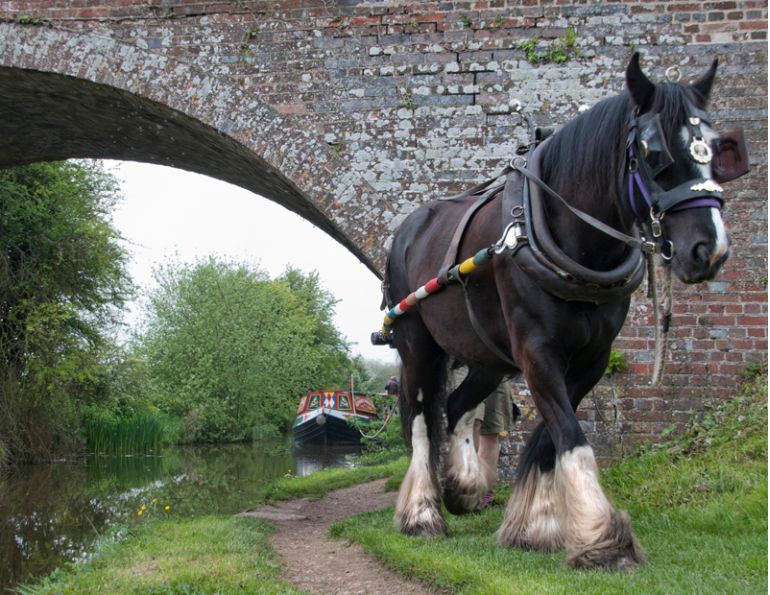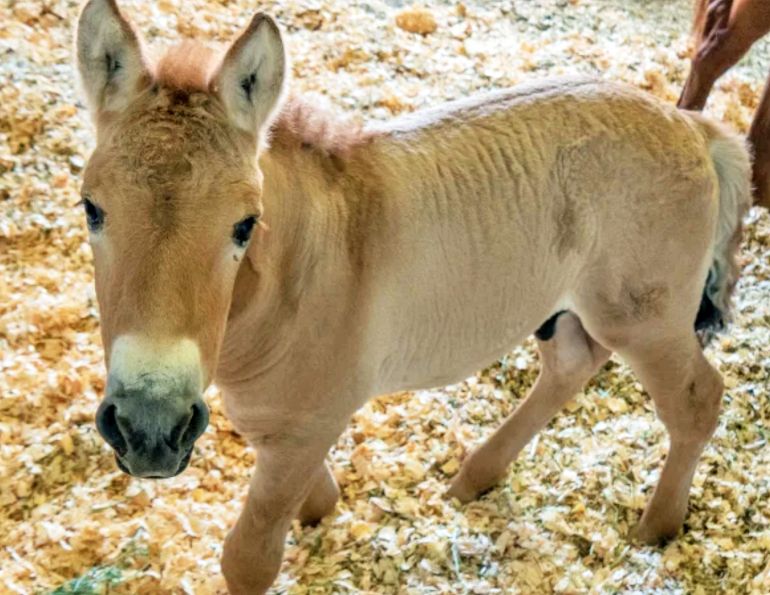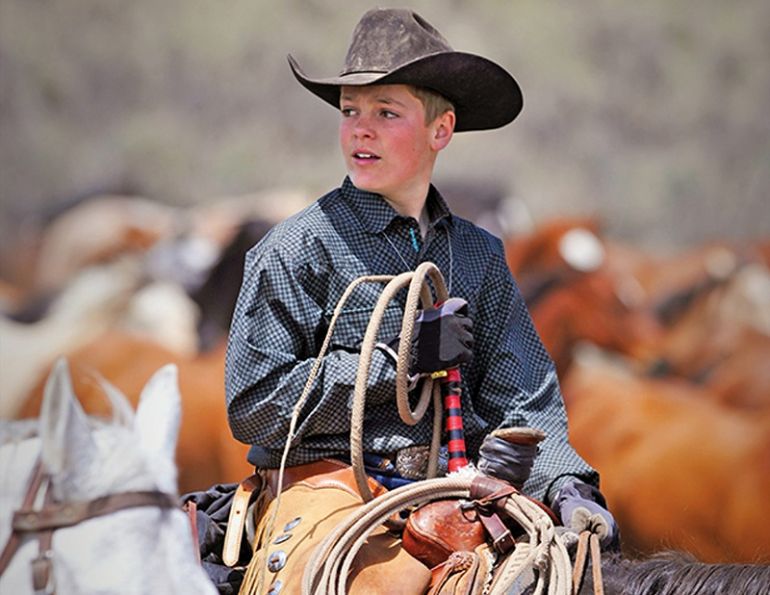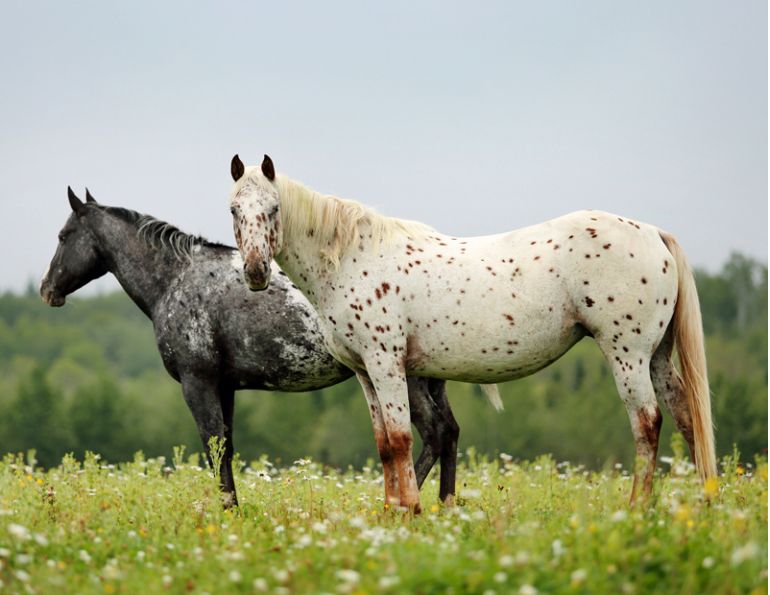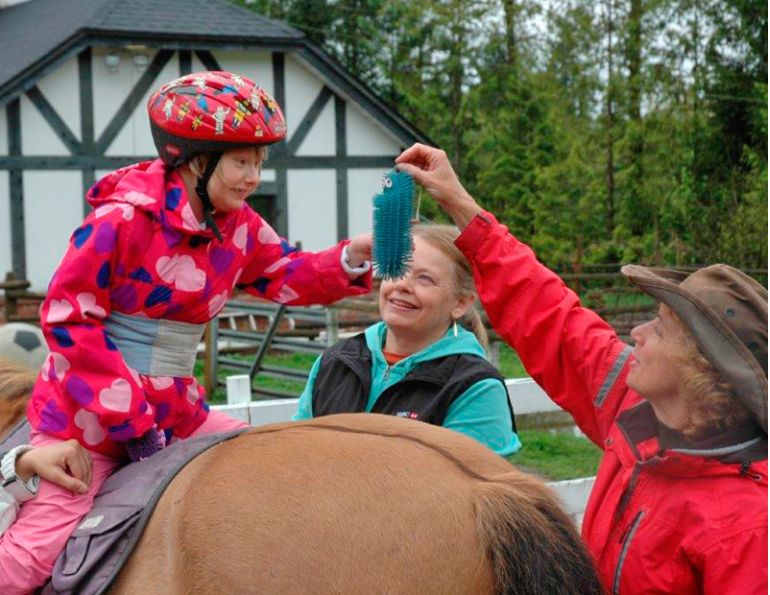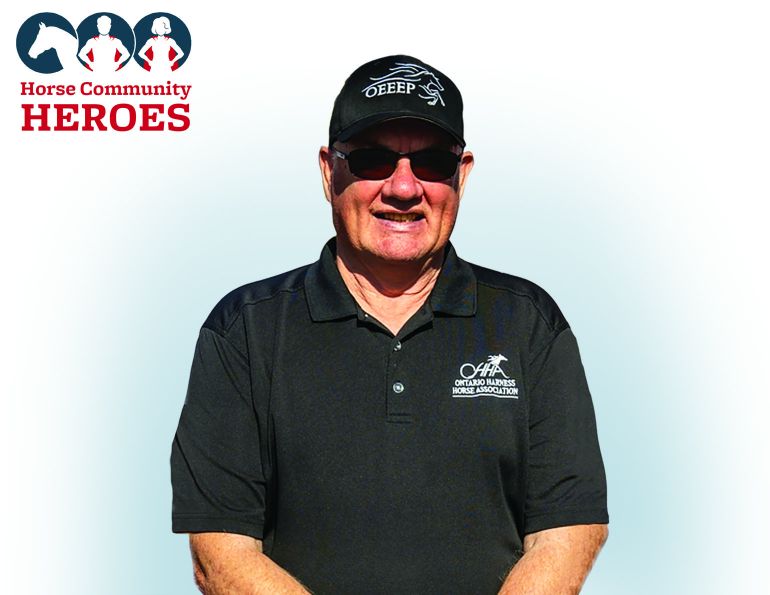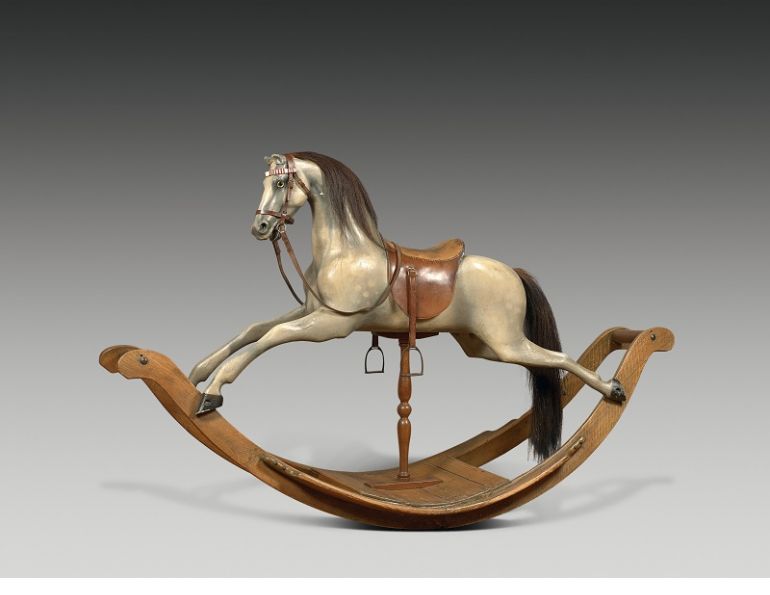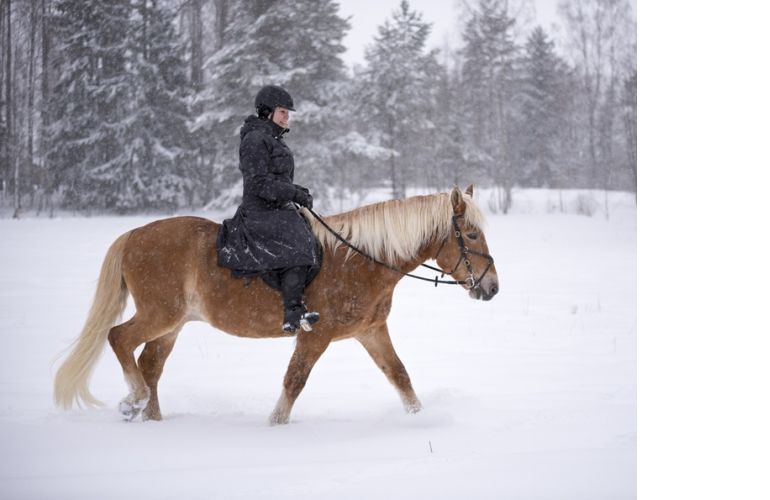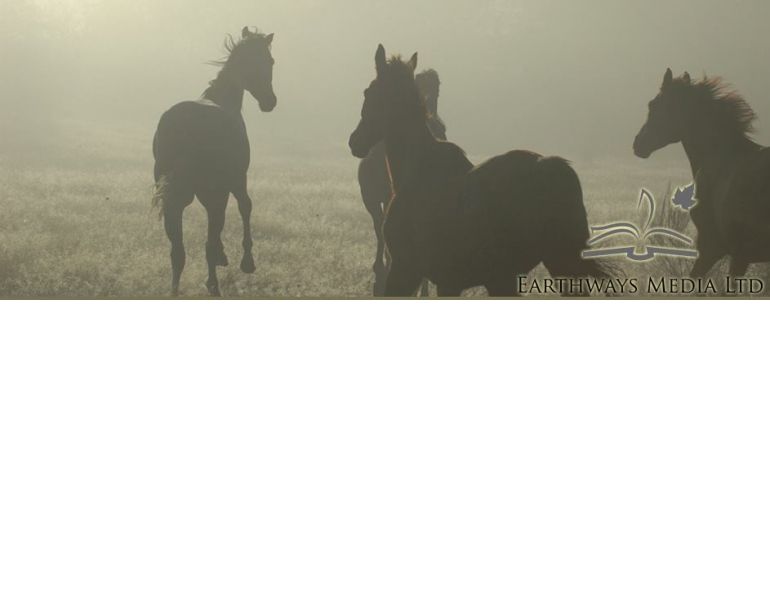Note: This article was originally published May 2006
By Karen Briggs
He was steadfast, brave and bold. A stalwart on Toronto's increasingly mean streets, but by all accounts a bit of a clown in the barn, and a favourite of the officers of Metro Toronto's Mounted Police unit.
Brigadier, a nine-year-old chestnut Belgian/Thoroughbred cross gelding, was in the service of that Mounted Unit when he was killed in the line of duty on the night of February 24, 2006, on patrol in Toronto's east end. He is credited with saving the life of his rider, Constable Kevin Bradfield, when he bore the brunt of what was allegedly a deliberate head-on collision with a minivan.
According to police reports, Dirk Sankersingh, 42, of Scarborough, Ontario, had been in a heated argument with another driver in a TD/Canada Trust drive-through ATM line-up. Brigadier and Constable Bradfield, in the company of fellow mounted police officer Constable Ron Gilbert, above Blue Moon, intervened and attempted to pull Sankersinghover. Instead, the man sped away, pulled a u-turn, then aimed his minivan directly at the horse who was affectionatelly called "Brig."
Both of the amiable chestnut's front legs were shattered in the collision, which reportedly catapulted the 1500-pound horse over the roof of the vehicle.
Television news footage that evening showed a gut-wrenching video clip of Brigadier, not understanding his legs would no longer bear his weight, vocalizing and struggling on the pavement with several officers kneeling on his neck. A gathering of local residents, many with tears in their eyes, turned away as two quick shots rang out in the night. And then the solid chestnut body lay still.
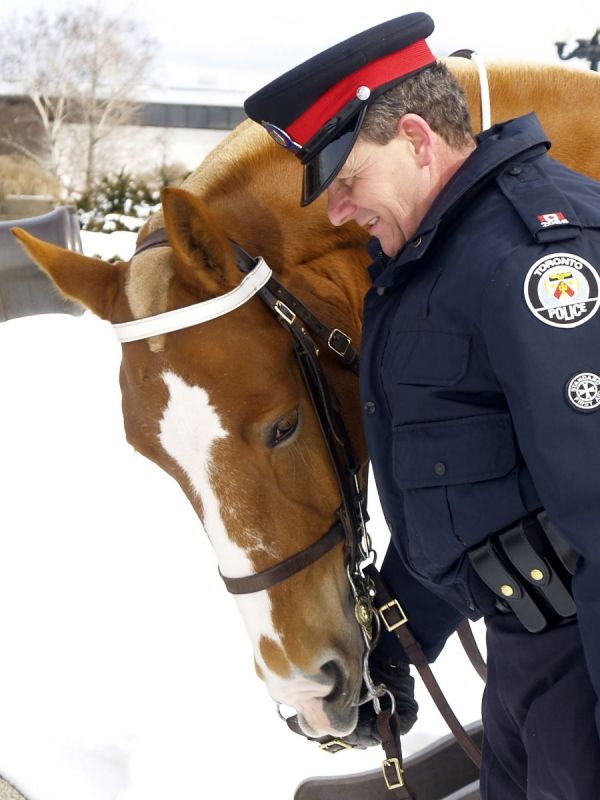
Bradfield suffered broken ribs and minor neck and leg injuries, but had recovered sufficiently to speak on behalf of his partner in law enforcement at a special memorial service held at the Ricoh Coliseum (which houses the Royal Agricultural Winter Fair), in downtown Toronto. In a voice which broke several times with the force of his emotion, he said, "Brig taught me about the bond between officer and horse. I am grateful for the chance to say goodbye to my partner, and to tell him that being in the saddle will never be the same."
Close to 1500 people honoured Brigadier's memory at the service. Dignitaries including Ontario's Lt. Governor James Bartleman, Toronto's mayor David Miller, and Toronto's Chief of Police Bill Blair, were joined by hundreds of fellow police officers and other service personnel, some from as far away as Vancouver, BC.
Said Constable Doug Jensen, who along with Constable Mike Kuncewicz represented the Vancouver Mounted Police, "When a unit loses a horse we all feel it, even out on the west coast. We were proud to be here today to honour Brigadier."
In addition to an eight-horse honour guard from the Metro Toronto unit, four officers with dogs from Kingston, Ontario and Niagara Regional Mounted Police (RCMP), and the Governor General's Horse Guards also attended. The police pipe band's mournful bagpipes played a send-off for the horse whose tack, cleaned of the scrapes and dirt from the street, was displayed next to the lecturn along with a portraid by Toronto photographer Anne de Haas. the empty saddle, and the breastplate displaying the crest of the Metro Toronto police force, said all that needed to be said.

A member of Toronto's Mounted Poilice Force, Brigadier died in the line of duty in February 2006, after he was deliberately struck in a hit-and-run. He took the brunt of the vehicle's impact and is credited with saving the life of his rider, Constable Kevin Bradfield. Brig has served under several officers including P.C.Vicki Montgomery (shown).
Big Shoes
Brigadier's death marks only the second time in memory that a Metro Toronto police horse has been killed in the line of duty. His will be big shoes to fill both literally and figuratively - in addition to being one of the Mounted Unit's most experienced and trusted horses, he was a valued member of the drill team and had represented Toronto with honour at mounted police competitions across North America for three years running.
And what remains bewildering for police offers and private citizens alike is that the act that caused Brig's death was entirely intentional. Staff Inspector Bill Wardle, who oversees the Mounted Unit, said, "We've had horses injured before, but this was a deliberate act. It's unfathomable, really. This sort of thing is so rare. It's an attack on the community, too - it's not just about the horse. This animal died providing a service to the people of Toronto.
"But in a way," Wardle continued, "this has demonstrated how strong a community this is, and that people do still value the service given by the mounted unit."
In a time when naysayers claim that mjountednits are a resource-draining anachronism, kept more for show than for practical policing, that's a powerful affirmation for the remaining 27 horses and 42 officers who serve Toronto. At the memorial, Police Chief Bill Blair noted that the mounted police represent, "a unique opportunity to connect with the youth of our city. They won't remember a police cruiser driving through their neighbourhood, but they remember when the Mounted Unit comes through." The magnetic attraction of a horse has the power to bring citizens and their protectors together - from children who beg to stroke a soft muzzle, to couples who run for blocks just to take a picture, or to senior citizens who want to say how much safer the neighbourhood feels with the horses around.

During the memorial service, Brigadier's tack and blanket were displayed along with three red roses, one for each of his main riders.
Ensuing editorials in some of hte greater Toronto area's daily and weekly newspapers demonstrated that not everyone understood such an outpouring from the community over "just a horse." That was to be expected, said Wardle. There were no explanations necessary for the community. Many of those who attended Brigadier's memorial were horse people; otheres were just admirers clutching stuffed ponies and wiping away tears. Back in the stables at one end of the Horse Palace, after a ceremony, hundreds streamed in to view the tributes to Brigadier displayed near his stall: floral wreaths and baskets of carrots, a framed pastel portrait, a gold-plated shoe. A beautiful rosewood box, donated by someone in sympathy, bore the horse's ashes. Nearby, a bulletin board displayed cards, letters, and drawings from children. Binders held print-outs of the thousands of sympathy emails the Mounted Unit has received from all over the world.
Several people stepped forward and ran their hands quietly over Brigadier's empty halter, hanging on the door. As always, the living horses in the adjoining stalls proved an irrestible draw for citybound children and adults alike - the fully fledged members of the unit with their roached manes and forelocks, and their "remounts" (recruits in training) who still bore, forelocks to denote their green status. Officers had to institute crowd control several times to make room for other horses from the unit returning from duty - just before ceremony, several had been dispatched to help search for a missing 19-year-old autistic man (successfully, as it turned out). Even as Brig was being saluted by those who knew him, his memory was being honoured by his unit, doing what is best.
Truth and Consequences
So what of punishment for this crime? In the aftermath of Brigadier's final moments, Metro Toronto police immediately began a search for the driver of the minivan, who fled who fled the carnage he'd wreaked. It didn't prove difficult. A couple of miles away they discovered the abandoned vehicle, its front end crushed and horsehair still embedded in the windshield. And within a few hours they arrested Sankersingh at his home in Scarborough.
He has been charged with dangerous operation of a vehicle causing bodily harm, and with failing to remain at the scene. Further charges may be pending. (Brigadier was necropsied at the University of Guelph before his cremation, so that police would have evidence of the injuries inflicted.) Sankersingh was released on $60,000 bail, and has been ordered to seek treatment for alcohol abuse, but details beyond this are currently blocked by a publication ban.
To horse people everywhere, these charges seem woefully inadequate. Where is the acknowledgement of the special status of Brigadier, a member of the Toronto police force every bit as much as his rider? Where was the punishment for the deliberate attack on this gentle giant?
The sad truth is, Canada currently has no provision in the Criminal Code recognizing the special status of police dogs and horses as officers on duty. In the eyes of hte law, he was no different than any other animal - that is to say, inadequately protected.
And that, say many, is something that needs to change. In no less than 27 American states, police service animals are recognized as officers under the law, with stricter punishments for inflicting pain and injury on them.
Blair agreed, "Perhaps there should be an offence. Those animals are serving the people of the city and as such the law should recognize the role they play in public safety, and there should be protection afforded to them."
Toronto Councillor Gloria Lindsay Luby (ward 4 - Etobicoke Centre), an animal lover and former chair of the Toronto Police Services Board, has taken up the gauntlet. After attending Brig's memorial service, she put pen to paper and wrote to Minister of Justice and Attorney General, the Honourable Vic Toews, as well as Stockwell Day (Minister of Public Safety and Emergency Preparedness), Michael Bryant (Attorney General of Ontario), and Monte Kwinter (Minister of Community Safety and Correctional Services), asking that law enforcement service animals - which includes police horses and dogs, as well as animals in other granches of government service, such as the sniffer dogs employed by Agriculture Canada at airports - be afforded better protection under the Criminal Code. Her letter, in part, read, "Toronto not only lost an animal dedicated to protecting its citizens, but also lost the significant amount of time and resources it invested to train the animal...Police offers and the general public held this animal in special regard.
"I am askiing the Governor of Canada to update and strengthen the Criminal Code to include the protection of law enforcement service animals against intentional harm. These animals should be recognized for the dangers and risks they face to serve and protect the public."
What can you do to support this effort? According to Lindsay Luby, the most effective thing you can do is to write your local Member of parliament and tell him or her how important it is to change the Criminal Code. "The legislation as it stands is very dated and needs to change," she said. "If we can do this, then perhaps Brigadier's death will not have been in vain."
Wardle is encouraged by Lindsay Luby's efforts. "I see it as a no-lose proposition for politicans," he said. "Who's going to argue that police animals need protection under the law? It's obviously a hote issue, and I think the time is now."
In the Aftermath
Recognizing the Mounted Unit's loss, Brigadier's breeder, David Carson of Listowel, Ontario, has generously offered the Toronto police force a three-year-old Belgian cross, Darton, as a replacement. Carson runs a large auction service, breeds champion Clydesdales, and also offers nurse mares on lease to farms wtih orphan foals.
According to Wardle, the Canadian Humane Society will be bestowing a posthumous Bravery Award in recognition of Brigadier's service. In addition, the Toronto Humane Society has given its "Be Kind to Animals" award to Constable Kevin Bradfield.
Brigadier's remains were cremated at the Ontario Veterinary College, where a special fund to support clinical care for horses was been set up in his memory.







